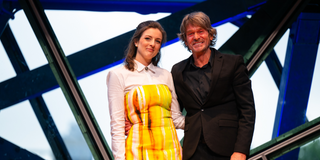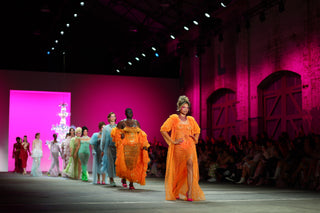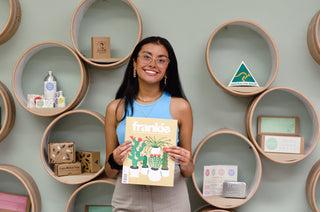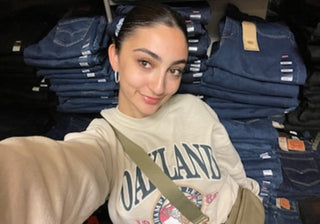Given the issues around climate change and the business ethics of the fashion industry, the topics of sustainable, ethical and environmentally-friendly fashion is not something we can overlook as fads or trends.
Rather, it is a sign that fashion is moving forward, and that consumers are becoming more and more conscious about their purchase.
To make it simple, we’ve broken down the concepts of Sustainable, Slow & Ethical Fashion so you can start buying and designing with a purpose!
What is Sustainable Fashion?
To sum up, sustainable fashion is a fashion that lasts, and one that lasts well.
When assessing a piece of clothing’s sustainability, it is important that you look at it as a product and think of the item in terms of its life cycle.
Ask yourself questions on the product’s impact on the environment: what materials is it made from? Is the composition of the fibre good to earth or detrimental? Is it mass produced? How good is its quality? How long will it last? How will it be disposed of once it cannot be used? Can the item be recycled or upcycled to extend its lifetime?

What is Ethical Fashion?
While ethical and sustainable fashion fit within the same conversation, ethical fashion is focuses more on how things are produced and the welfare of those involved in their production.
If you, as the consumer, have access to the product’s history and important information when purchasing — i.e., where it was made and who made it and whether these people are paid well? You are able to get a better picture of the ethicality of its production, and base your decision for purchase as a “conscious consumer.”

What is Local Fashion?
Often championed as one of the solutions to sustainable and ethical fashion, Local Fashion basically means the garment is both designed and manufactured within a geographic restraint. This way, the fashion brand can support the local economy, cut on carbon footprint/environmental impact, and increase supply chain traceability.
For example, a fashion label might have their products both designed and manufactured in Melbourne, or even use fibre that is also grown within Australia.
Even if the fibre production is done offshore, with transparent information, consumers can make an informed decision based on the localisation of the product as to whether or not to purchase.
What is Slow Fashion?
Slow fashion is exactly that, it’s not fast.
In order for fashion to really be sustainable, ethical and local, it must really be slow. Slower lead times mean slower manufacturing with fewer units and slower delivery.
While clothing brands should ensure a sustainable, ethical or local fashion production process, consumers have a great responsibility in maintaining a slow fashion lifestyle that avoids thoughtless purchases and overconsumption, especially of fast fashion. To do so, it is important that we prioritise quality over quantity.

Don’t feel pressured to transform your entire wardrobe overnight! Rather, focus on using the clothes you already have, and try to maintain a capsule wardrobe before you shop for new pieces.
In the end, designers and consumers have equal responsibility to change Fashion for the better.
















